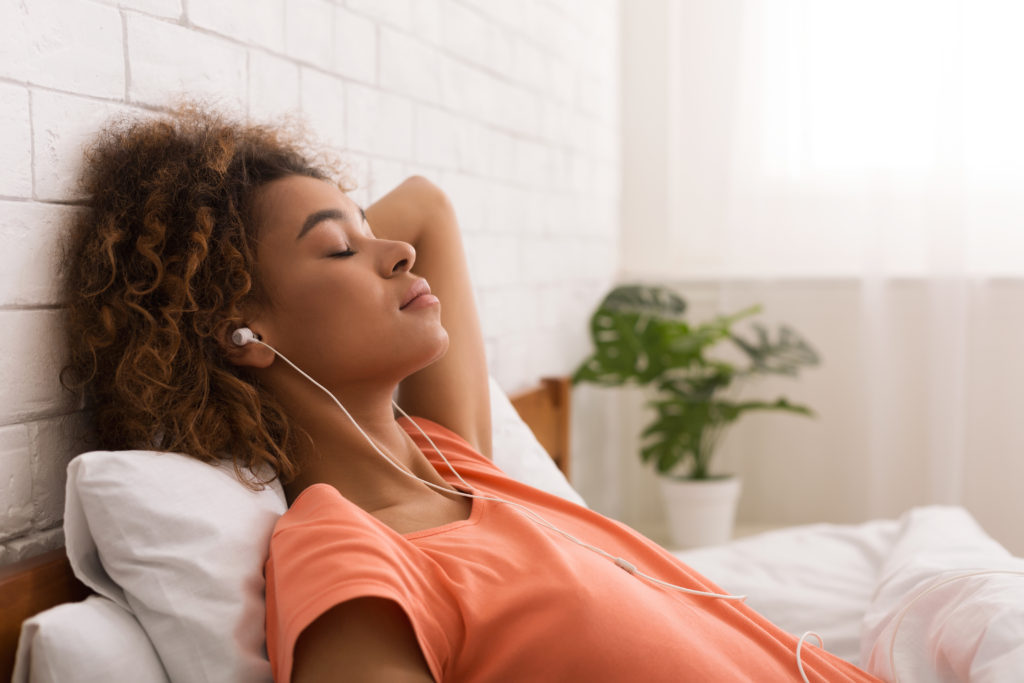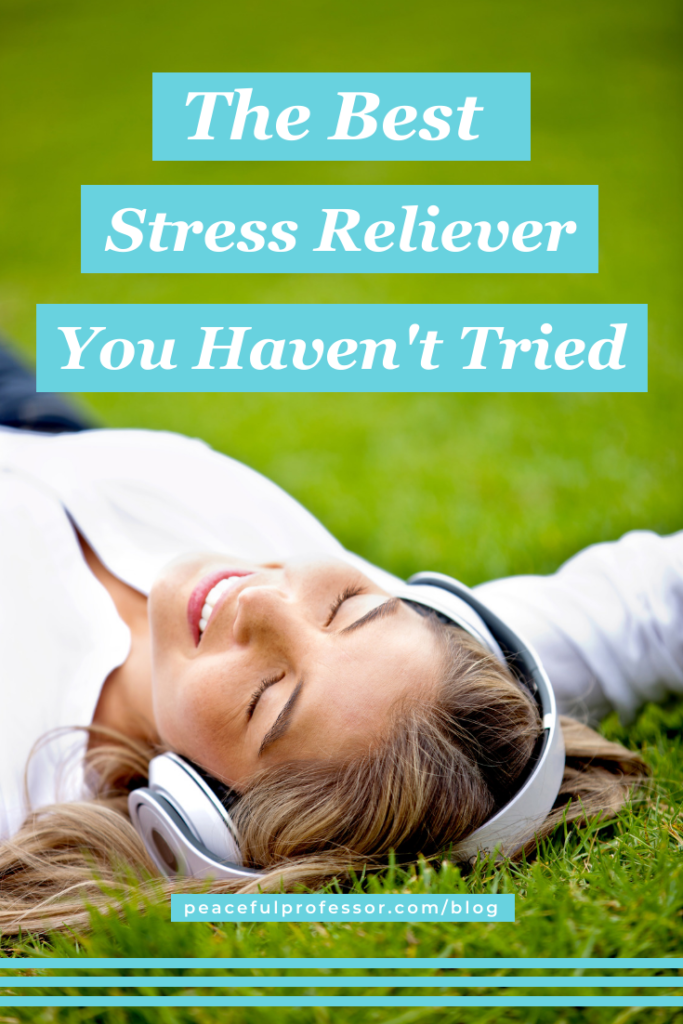Tapping. Crinkling. Whispering. Scratching.
Tingles. Shivers. Flutters. Quivers.
Welcome to the weird and wonderful world of ASMR–and the best stress reliever you probably haven’t tried.
What is ASMR?
Autonomous sensory meridian response, or ASMR, is a physical and mental response to stimuli characterized by a tingling sensation that typically starts at the scalp and travels down the neck and spine. Some people describe it as mimicking “the chills” or goosebumps, while others say it feels like a mild (and comfortable) electric current. Also known as a “brain massage” or “brain orgasm,” those who experience ASMR report it helps them reduce stress and feel more relaxed, sometimes even mildly euphoric. The stimuli that elicit ASMR, called triggers, are often quite mundane sights and sounds such as tapping a pen on a desk, turning magazine pages, crinkling tissue paper, or putting on latex gloves.
ASMR triggers are intensely personal–what may trigger me could repulse you. Mouth sounds are probably one of the most “controversial” ASMR triggers. Some people delight in hearing another person sip on soup, chew gum, or slowly devour a chocolate covered caramel, while other people cringe at these sounds. I tend to experience ASMR from whispered voices (especially those with accents), the sound of hair being brushed, and crinkling paper.
What are ASMR videos like?
Due to the number of potential triggers, and a rapidly growing audience, there are thousands of ASMR artists creating tingly content, mostly on YouTube (currently, there are over 5 million ASMR videos published to YouTube). Some artists focus purely on sounds, often using a set of binaural microphones (like the ever-popular 3dio) that allow them to direct sounds into one ear at a time (which is why you should listen to ASMR videos with earbuds). Depending on the proximity of the trigger sounds to the microphones, it can seem like they are standing to your left, right, or even behind you. Artists like ASMR Magic use all sorts of ordinary and unusual tools to tap, scratch, rub, and brush across the microphones, such as makeup brushes, fluffy ear muffs, shaving cream, salt scrub, plastic wrap, and body oil.
Another popular type of ASMR trigger is personal attention. Often, these are role play videos where the ASMR artist acts as if you are in the room with them and they pay special attention to you, such as pretending to be a school nurse checking your scalp for lice, an ophthalmologist testing your vision, an aesthetician pampering you at a spa, or a hairdresser washing, trimming, and styling your hair. Some artists produce incredibly creative role plays involving elaborate props and green screen recording software to help the viewer feel completely immersed in the experience, such as Goodnight Moon, TingTing ASMR, and Blue Whisper.

What is it like to experience ASMR?
At this point, you may be thinking, “this sounds really bizarre to me.” I had that reaction when I first encountered ASMR videos three years ago. During a persistent bout of insomnia, I came across a video by Maria from GentleWhispering where she was speaking in a slow, soft voice, fluttering her fingers, and touching the camera lens. I thought, “what the heck is this weirdness???” I proceeded to check out her YouTube channel and saw that she had one million subscribers (she’s nearing 2 million now) and figured I’d give her videos a chance since nothing else was helping me fall asleep. I watched another video in which she spoke to the camera as if we were face-to-face and she was gently running her fingers through my hair and telling me she understood the stress I was under and she was here to take care of me. I actually cried. I know that sounds strange, but at that moment, I was sleep-deprived and depressed and Maria’s soothing voice and calming presence inspired such relief. Since then, I have watched hundreds of ASMR videos, creating playlists for a variety of occasions (such as videos that help me sleep, focus, and reduce stress).
When explaining ASMR videos to people, I’m often met with perplexed expressions and comments about “New Age, hippie, weirdness.” I understand that reaction, but I’m definitely not alone in my love of ASMR as indicated by the dramatic increase in Google searches since 2012. Its popularity is definitely growing well beyond a niche trend.
It’s important to note that some people do not experience ASMR and, thus, it’s difficult for them to understand (we currently do not know why some people experience the sensation while others don’t). But, it’s possible you’ve experienced ASMR in your life without knowing what it was called. Think back to your childhood. Perhaps you were at a slumber party and a friend was brushing your hair. Or maybe you were visiting the school nurse when you were sick and she was putting on latex gloves. Perhaps you were in the classroom and your teacher leaned over you to point out something in the textbook. In these moments, you may have felt a static-like tingle at the base of your skull and it ran down your spine, making you shiver. That’s ASMR! Millions of people around the world experience this sensation but we still know very little about it.
Can ASMR relieve stress?
Since the term was coined less than a decade ago, empirical research is limited but is growing. Early studies indicate that experiencing ASMR can have positive effects on our emotional and physical states. For example, researchers from the University of Sheffield in the UK found that those who experience the phenomenon had significantly reduced heart rates while watching ASMR videos compared to people who do not experience ASMR. They also showed significant increases in positive emotions including relaxation and feelings of social connection.
Dr. Giulia Poerio, of the University of Sheffield’s Department of Psychology, said: “What’s interesting is that the average reductions in heart rate experienced by our ASMR participants was comparable to other research findings on the physiological effects of stress-reduction techniques such as music and mindfulness.” We still need much more research on the topic, but small studies like this one along with the anecdotes of millions of people indicate ASMR can have a very positive impact on our well-being.
Ready to give ASMR a try?
Have I convinced you to check out an ASMR video yet? If you’re still not sure, watch this video by Gibi ASMR in which she explains what ASMR is and includes snippets from dozens of artists so you can see the incredible variety. When getting started, my advice is to watch videos from channels that have the most subscribers because they are popular for a reason — they tend to produce the highest-quality videos that feature crowd-pleasing triggers. Channels to check out:
- GentleWhispering
- ASMR Darling
- Gibi ASMR
- WhispersRed (my personal favorite)
- ASMR Magic
- Blue Whisper
Remember that the triggers that elicit ASMR are very individualized. So you may have to watch numerous videos from a variety of artists in order to find what works for you. The list above is just a tiny drop in the bucket when it comes to the ASMR channels out there. It’s also possible you don’t experience ASMR, no matter the trigger. Don’t fret! Some people who don’t experience the tingly sensation still find ASMR videos relaxing, much like people find videos of Bob Ross, hand lettering, or nail painting to be soothing. If ASMR videos don’t reduce your stress levels, that’s okay! But find something that does. In our overcrowded, overburdened, overstimulated lives, we need to consistently set aside time to relax our minds and bodies.


3 Comments on The Best Stress Reliever You Haven’t Tried